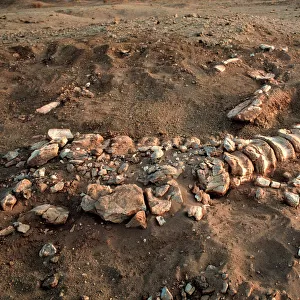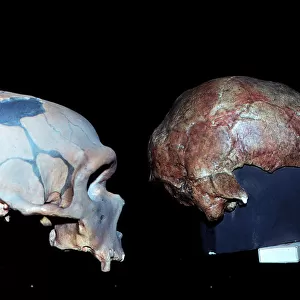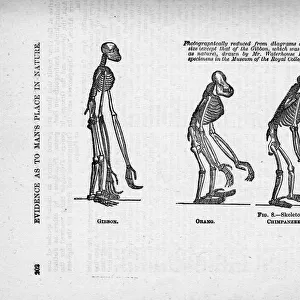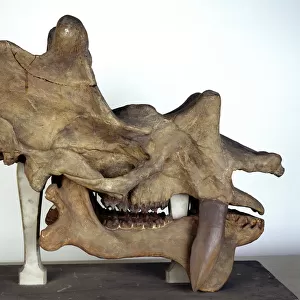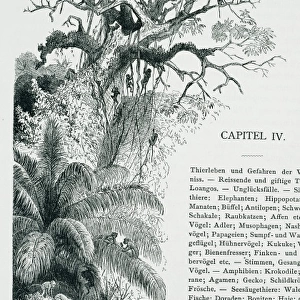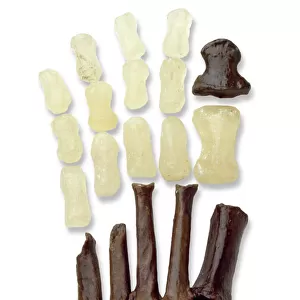Home > Animals > Mammals > Hominidae > Neanderthalensis
Homo neanderthalensis cranium (Tabun 1)
![]()

Wall Art and Photo Gifts from Mary Evans Picture Library
Homo neanderthalensis cranium (Tabun 1)
Front view of the skull of a female Homo neanderthalensis discovered at Tabun at Mt. Carmel, Israel. The specimen known as Tabun 1 dates back to around 100, 000 year ago
Mary Evans Picture Library makes available wonderful images created for people to enjoy over the centuries
Media ID 8613427
© Mary Evans Picture Library 2015 - https://copyrighthub.org/s0/hub1/creation/maryevans/MaryEvansPictureID/10707216
Anthropological Anthropology Bone Carmel Cranium Fossil Fossilised Hominini Homo Homo Neanderthalensis Israel Middle East Neanderthal Skull Tabun
FEATURES IN THESE COLLECTIONS
> Animals
> Mammals
> Hominidae
> Neanderthalensis
> Asia
> Israel
> Related Images
EDITORS COMMENTS
In this image, we behold the frontal view of Tabun 1, the well-preserved cranium of a female Homo heidelbergensis, who later became known as Homo neanderthalensis. Discovered at the Tabun Cave in Mount Carmel, Israel, around 100,000 years ago, this ancient skull offers a fascinating glimpse into the anatomy and evolutionary history of our closest extinct relative. The female Neanderthal, whose remains bear the scientific designation Tabun 1, is an essential piece of the anthropological puzzle, providing valuable insights into the morphological and behavioral adaptations of our enigmatic ancestors. Neanderthals, members of the Hominini tribe, were once thought to be brutish and unintelligent, but recent discoveries have revealed a more complex and sophisticated species. The Tabun 1 cranium, with its distinctive brow ridge, large nose, and flat face, showcases the unique features that distinguish Neanderthals from modern humans. The broad, prominent brow ridge, for instance, may have provided additional protection to the eyes and forehead, while the large nose would have aided in warming and filtering the air in their cold European and Middle Eastern habitats. As we gaze upon this ancient relic, we are reminded of the incredible journey of human evolution and the intricate web of connections that bind us to our past. The Tabun 1 cranium is not just a fossilized bone; it is a testament to the resilience, adaptability, and ingenuity of our ancestors, who thrived in some of the most challenging environments on Earth. This image of the Tabun 1 cranium invites us to explore the depths of our shared human history and to marvel at the wonders of the natural world. As we continue to unravel the mysteries of our past, we gain a deeper appreciation for the complex tapestry of life that has shaped us into the beings we are today.
MADE IN AUSTRALIA
Safe Shipping with 30 Day Money Back Guarantee
FREE PERSONALISATION*
We are proud to offer a range of customisation features including Personalised Captions, Color Filters and Picture Zoom Tools
SECURE PAYMENTS
We happily accept a wide range of payment options so you can pay for the things you need in the way that is most convenient for you
* Options may vary by product and licensing agreement. Zoomed Pictures can be adjusted in the Cart.



